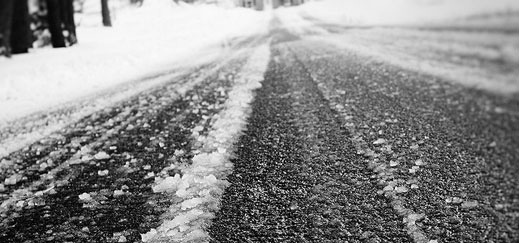Time for Winter Tyres
As the weather cools down and roads get icy, it is time to change the car tyres. There are two options: non-studded winter tyres and studded tyres. Which are better?

Studded tyres grind the road surface and generate dust particles which worsen the air quality. To avoid this, drivers are encouraged to use non-studded winter tyres. But are non-studded tyres a safe choice for all drivers?
- It’s proven that on icy roads studded tyres have better traction than non-studded tyres. Regardless of this, accident statistics don’t show noticeable differences between drivers with non-studded or studded tyres, says Senior Researcher of traffic psychology, Sirkku Laapotti.
The Traffic Psychology Unit of the University of Turku took part in the recent NASTA research project, which looked into the conditions of limiting the use of studded tyres in downtown Helsinki.
A survey studying the accident ratio in relation to the driver’s driving activity was conducted in Helsinki and near area’s vehicle inspections offices. The number of accidents was the same but accident types varied. For example, drivers with non-studded tyres had relatively less rear-end collisions and close calls compared to drivers with studded tyres.
- The driver can manage non-studded tyres as well as studded tyres, if the driver wants so. The key to safety is in the way you drive. Drivers with non-studded tyres seem to be more anticipatory than those with studded tyres. Typically, if the car has studded tyres, drivers tend to rely on the tyre’s grip too much, which results in higher speeds and shorter safe-distances.
Non-studded Tyres Are an Experienced Driver’s Choice
Laapotti clarifies that different tyres don’t stand out in accident statistics because drivers who have non-studded tyres have considered the tyres’ qualities in relation to their driving.
Based on the survey, the majority of drivers with non-studded tyres were older men.
- Men drive more than women, so out of all the groups they have the most driving experience and confidence. Age usually also reduces speeds. These were also the reasons which the drivers gave for choosing non-studded tyres, Laapotti explains.
Those who had chosen non-studded tyres also drove considerably newer cars and the cars had more technology to help the driver with icy conditions.
- For hasty, inexperienced or uncertain drivers non-studded tyres are not the recommendable choice, especially if they drive an old car which doesn’t have ABS or ESC (Electronic Stability Control).
Laapotti fears that road safety might weaken, if the use of studded tyres was to be limited so that also inexperienced and speedy drivers would more and more start to use non-studded tyres.
If the use of studded tyres was to be limited, speed limits should also be lowered. In addition, more emphasis should be placed on allocated training and education in order to remodel the drivers’ driving styles to be more anticipatory.
There Is No Reason to Stop Using Studded Tyres
Non-studded tyres aren’t for every driver and banning studded tyres entirely wouldn’t be sensible in any case.
Studded tyres roughen the road surface and prevent the roads from collecting a thick ice layer. If everybody were using non-studded tyres, the winter road maintenance would have to include roughing the road surface.
- According to earlier studies, at least 20 per cent of drivers need to have studded tyres to prevent the ice layering on roads, Laapotti clarifies.
No need to rush to buy non-studded tyres, especially if you are a new driver. Sometimes it’s best even for the more experienced driver to hold on to studded tyres.
- During slippery winter conditions it’s best to think twice if it’s really necessary to venture out in the first place. If you can’t work from home or you live in the neck of woods it’s best to have studded tyres!
Text: LR
Photographs: mommamia and Lisa Williams